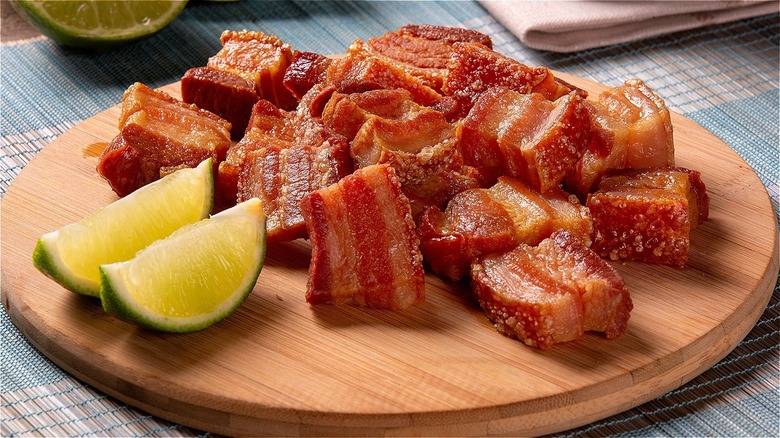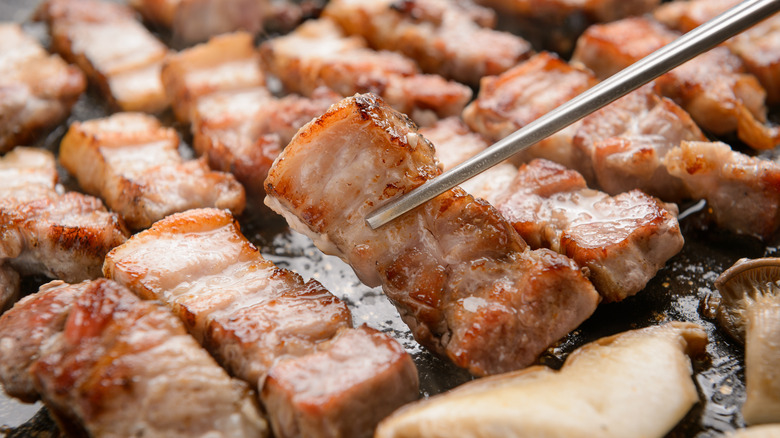The Michelin-Approved Method For Crispier Pork Belly
There are few culinary experiences as delightful as sinking your teeth into juicy pork belly. The mega-savory, hearty, salty, tender cuts of meat are enjoyed around the world in dishes such as Korean bibimbap, Taiwanese gua bao, Thai guay jab, and Filipino lechon kawali. Since pork belly is sourced from the animal's underside, it typically contains a generous layer of fat, which greatly enhances its succulent flavor and melt-in-your-mouth texture, according to the National Pork Board.
Pork belly also has a few surprising health benefits, considering it's often consumed as an indulgence. Healthline explains that pork belly, though a bit high in calories and saturated fat, is packed with B vitamins, iron, zinc, and other essential nutrients. It's also known for being fairly low in sodium.
Next time you're craving pork belly and want to whip up the umami goodness at home, take a page out of the Michelin Guide to achieve the crispiest result possible.
Perfect pork belly with these Michelin-backed tips
The Michelin Guide is the global go-to source for pro cooks and domestic food lovers when it comes to learning about various ingredients and preparing palatable meals. If you're a bacon fanatic, Qiu Xiaogui, a Michelin Star-awarded chef in Thailand, and restaurateur Werapat "Pong" Kornchaijirajed passionately demonstrate how to cook the best pork belly in the comfort of your own kitchen.
First and foremost, size matters. Chef Qiu shares that the pig itself should weigh about 19 kg (around 42 pounds). The freshness of the pork also can make or break the final product, as well as the aroma that fills the air while cooking, per Kornchaijirajed. Additionally, while pork belly is celebrated for its fattiness, it's actually wise to choose cuts that contain a good amount of meat and aren't overly greasy.
Keeping the skin dry is also key to attain the ideal level of crispiness. Chef Qiu suggests soaking the pork belly in water for 25 minutes, steaming it for 20 minutes, piercing the pork, marinating it with spices and salt, then air drying it with a fan for about 12 hours. As for the browning process, Kornchaijirajed recommends frying pork belly in pig lard to create a taste that comes full-circle. Both Qiu and Kornchaijirajed prefer to fry pork belly over medium heat to avoid the skin becoming too firm rather than deliciously crispy — or worse yet, burnt.

